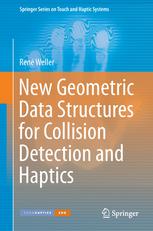

Most ebook files are in PDF format, so you can easily read them using various software such as Foxit Reader or directly on the Google Chrome browser.
Some ebook files are released by publishers in other formats such as .awz, .mobi, .epub, .fb2, etc. You may need to install specific software to read these formats on mobile/PC, such as Calibre.
Please read the tutorial at this link: https://ebookbell.com/faq
We offer FREE conversion to the popular formats you request; however, this may take some time. Therefore, right after payment, please email us, and we will try to provide the service as quickly as possible.
For some exceptional file formats or broken links (if any), please refrain from opening any disputes. Instead, email us first, and we will try to assist within a maximum of 6 hours.
EbookBell Team

5.0
50 reviewsStarting with novel algorithms for optimally updating bounding volume hierarchies of objects undergoing arbitrary deformations, the author presents a new data structure that allows, for the first time, the computation of the penetration volume. The penetration volume is related to the water displacement of the overlapping region, and thus corresponds to a physically motivated and continuous force. The practicability of the approaches used is shown by realizing new applications in the field of robotics and haptics, including a user study that evaluates the influence of the degrees of freedom in complex haptic interactions. New Geometric Data Structures for Collision Detection and Haptics closes by proposing an open source benchmarking suite that evaluates both the performance and the quality of the collision response in order to guarantee a fair comparison of different collision detection algorithms.
Required in the fields of computer graphics, physically-based simulations, computer animations, robotics and haptics, collision detection is a fundamental problem that arises every time we interact with virtual objects. Some of the open challenges associated with collision detection include the handling of deformable objects, the stable computation of physically-plausible contact information, and the extremely high frequencies that are required for haptic rendering. New Geometric Data Structures for Collision Detection and Haptics presents new solutions to all of these challenges, and will prove to be a valuable resource for researchers and practitioners of collision detection in the haptics, robotics and computer graphics and animation domains.